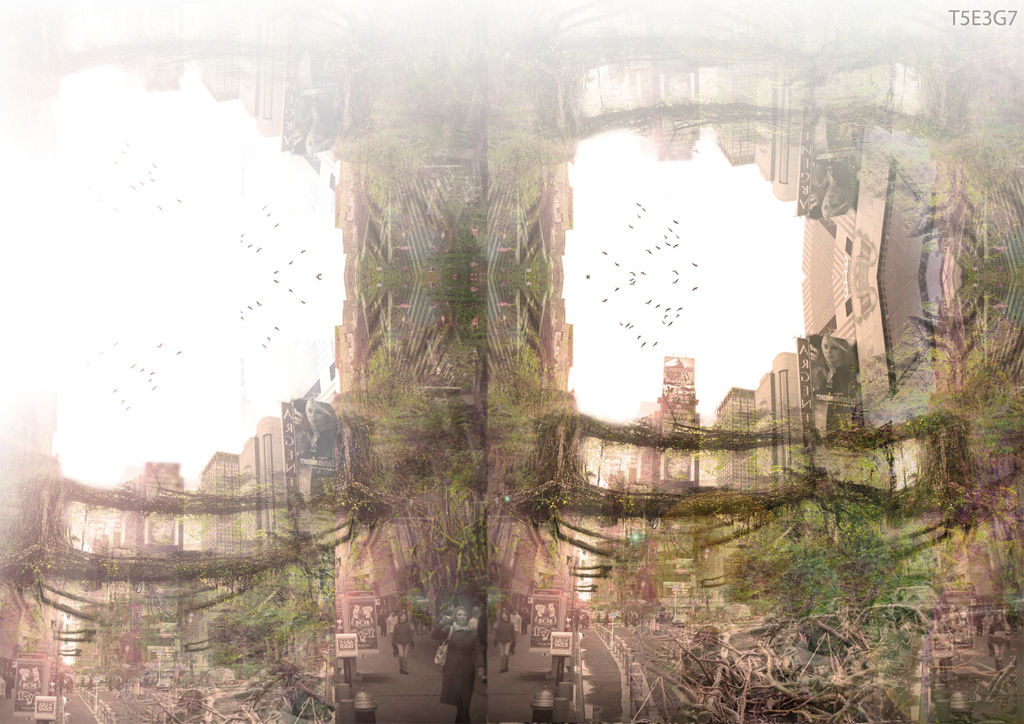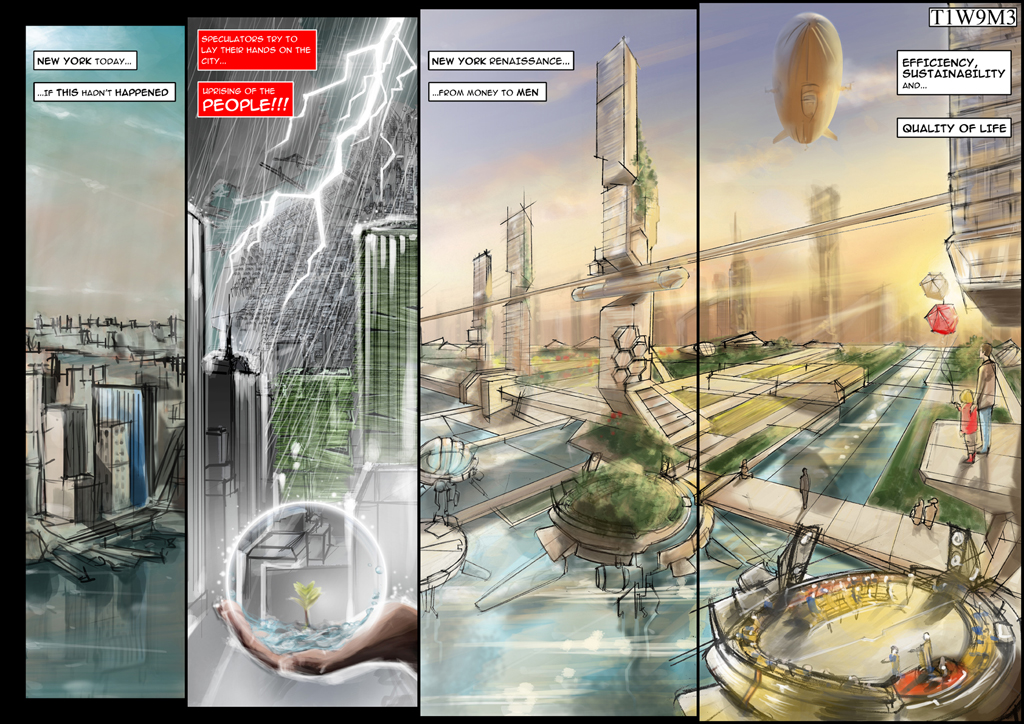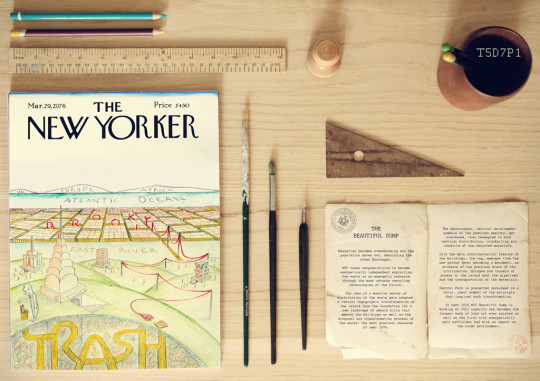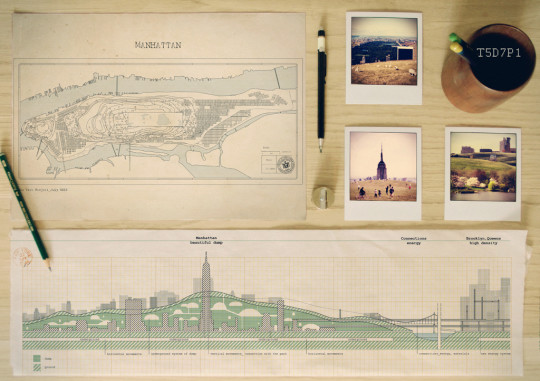Info:
Title: NYCV FIRST PRIZE /// THE NEW YORKER - Code: T5D7P1Contest: NY / 2012
By: E. Giannakopoulou - S. Carera - H. Isola - M. Norzi
Views: 7142 Likes: 5
Votes:
JOSHUA PRINCE-RAMUS10 EVA FRANCH I GILABERT9 ROLAND SNOOKS8 SHOHEI SHIGEMATSU7 ALESSANDRO ORSINI8 MITCHELL JOACHIM57.8
NYCV FIRST PRIZE /// THE NEW YORKER
Future, present and past have always been fundamental concepts in every phase of developing which the history of New York City has faced. Things here change very fast, although others never change. With such spirit in mind, we have interpreted the competition as an homage to Romanian-born American artist, architect, cartoonist and illustrator, Saul Steinberg (1914–1999). Among many masterpieces, he is the author of famous The New Yorker magazine cover (March 29, 1976) “View of the World from 9th Avenue”. Such drawing has come to represent Manhattan’s telescoped interpretation of the country beyond the Hudson River. Showing the supposedly limited mental geography of Manhattanites, it has become iconic as a representation of one of the most influential and perhaps the last ideal city ever existed.
Nowadays trying to imagine the future would give anyone reason to worry about, for the catastrophic impact of civilization on the environment and the global climate. Although the social and urban studies have recently realized that high density cities are much more preferable than spread ones, which till few decades ago were still misleadingly named as garden-cities. In such sense, NYC is considered by far more sustainable than the suburbs with their independent houses alleys and drives, which dramatically constitute the most popular way of living all over the US. If the understanding of the term of carbon foot-print finally frames the problem clearly and pragmatically, still very much has to be done in order to make the urban systems independent both energetically and as per the refuse disposal. The preliminary remarks of the project are a near future connoted by a difficult handling, with waste that piles up out of all proportion; the citizenry of Manhattan calls for abandoning the not in my back yard attitude and faces up its own responsibility taking the decision of managing the garbage disposal inland, inside the limits of the island. A radical cultural and technological transformation, able to revolutionize the energy balance, develops a different skyline and opens to a new life style as well.
The steps that lead to this new condition are:
• Manhattan becomes overwhelming and the population moves out, densifying the other Borroughs.
• NYC takes responsibility to become energetically independent exploiting the waste as an energetic resource through the most advance recycling technologies of the future.
• The idea of a massive center of exploitation of the waste gets adopted. A radical topographic transformation of the island lays the foundation for a new landscape of smooth hills that embody the buildings as well as the disposal and transformation process of the waste: the most precious resource of year 2076.
• The skyscrapers, vertical development symbols of the previous century, get abandoned, then readapted to host vertical distribution, stockpiling and conduits of the recycled materials.
• Only the main architectonical feature of the buildings, the top, emerges from the new ground level becoming a monument, as evidence of the previous state of the civilization. Bridges and tunnels of access to the island host the pipelines and the transportation of the materials.
• Central Park is preserved unchanged as a relic, ideal symbol of the principle that inspired such transformation.
• In year 2076 NYC Beautiful Dump is working at full capacity and becomes the largest work of land art ever existed as well as the first city energetically self sufficient and with no impact on the outer environment.
Related Posts :
Comments:
Info:
Title: NYCV FIRST PRIZE /// THE NEW YORKER
Time: 13 giugno 2012
Category: NY
Views: 7142 Likes: 5
Tags: -








